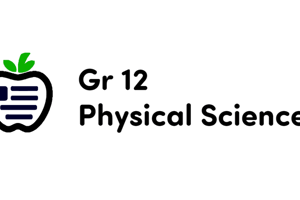Podcast
Questions and Answers
Which force is responsible for the force of attraction between two masses?
Which force is responsible for the force of attraction between two masses?
- Gravitational Force (correct)
- Weak Nuclear Force
- Electromagnetic Force
- Strong Nuclear Force
What type of force holds atomic nuclei together?
What type of force holds atomic nuclei together?
- Strong Nuclear Force (correct)
- Weak Nuclear Force
- Gravitational Force
- Electromagnetic Force
Which force causes charged particles to attract or repel each other?
Which force causes charged particles to attract or repel each other?
- Weak Nuclear Force
- Gravitational Force
- Electromagnetic Force (correct)
- Strong Nuclear Force
According to Newton's laws of motion, an object in motion will stay in motion unless acted upon by an external force. This is an illustration of which law?
According to Newton's laws of motion, an object in motion will stay in motion unless acted upon by an external force. This is an illustration of which law?
What is the role of tension in the context of forces?
What is the role of tension in the context of forces?
Which law of motion describes that an object in motion will continue in motion unless acted upon by an external force?
Which law of motion describes that an object in motion will continue in motion unless acted upon by an external force?
How does tension act when a rope is pulled?
How does tension act when a rope is pulled?
Which principle states that for every action, there is an equal and opposite reaction?
Which principle states that for every action, there is an equal and opposite reaction?
Flashcards are hidden until you start studying
Study Notes
Physics Force Ch: A Journey Through Types of Forces, Newton's Laws, and Tension
Physics delves into the world of forces, exploring the fundamental interactions that govern the universe. In our exploration of the topic "Physics Force Ch," we'll delve into the realms of types of forces, the groundbreaking laws of Sir Isaac Newton, and a specific force known as tension.
Types of Forces
Forces are physical interactions that cause objects to accelerate or change direction. There are four fundamental forces in nature: gravitational, electromagnetic, strong nuclear, and weak nuclear forces. However, our primary focus will be on the common forces encountered in everyday life:
- Gravitational Force: The force of attraction between two masses, such as the Earth's gravitational pull on an object.
- Electromagnetic Force: The force that causes charged particles to attract or repel each other.
- Strong Nuclear Force: The force that holds atomic nuclei together, ensuring the stability of the atomic particles.
- Weak Nuclear Force: The force that allows certain types of radioactive decay to occur.
However, our primary concern is with the first two forces, gravitational and electromagnetic, as they shape our interactions with the world around us.
Newton's Laws of Motion
Sir Isaac Newton's three laws of motion provide a foundation for understanding forces and their effects.
- Law of Inertia: An object at rest will remain at rest, and an object in motion will remain in motion at a constant velocity unless acted upon by an external force.
- Law of Acceleration: The change in an object's velocity is directly proportional to the net force acting on it and is in the same direction as the net force.
- Law of Action and Reaction: For every action, there is an equal and opposite reaction.
These laws are fundamental to understanding how forces affect our world.
Tension
Tension is a particular type of force that arises when two objects are connected by a flexible material, such as a rope or a spring. Tension acts in the opposite direction of where the material is being stretched or compressed. For example, when you pull on a rope, the rope stretches and creates a tension force in the rope that acts against the direction of pull.
Tension plays a vital role in our daily lives, from the suspension system of a car to the stability of a suspended bridge. Understanding tension is essential to designing and building structures that must withstand various forces.
Physics Force Ch explores the fascinating world of forces and their implications, revealing that understanding them is the key to unlocking the mysteries of our universe. Through the study of types of forces, Newton's laws of motion, and tension, we can understand the foundations of physics and the world around us.
Studying That Suits You
Use AI to generate personalized quizzes and flashcards to suit your learning preferences.




